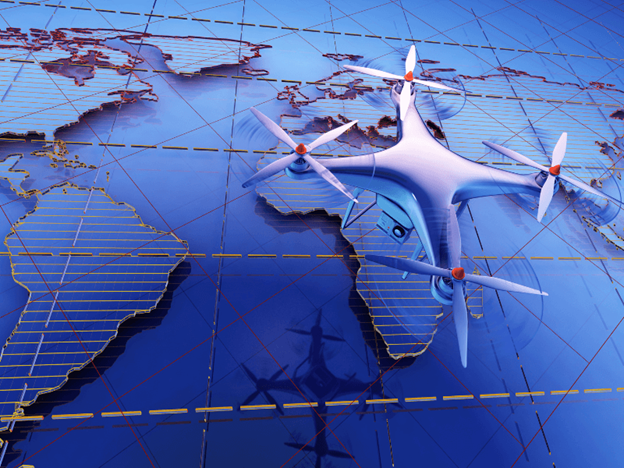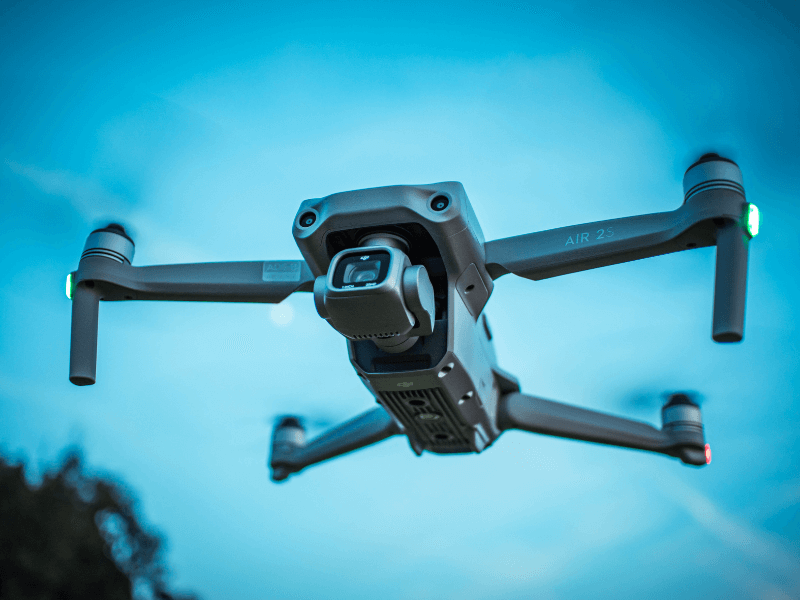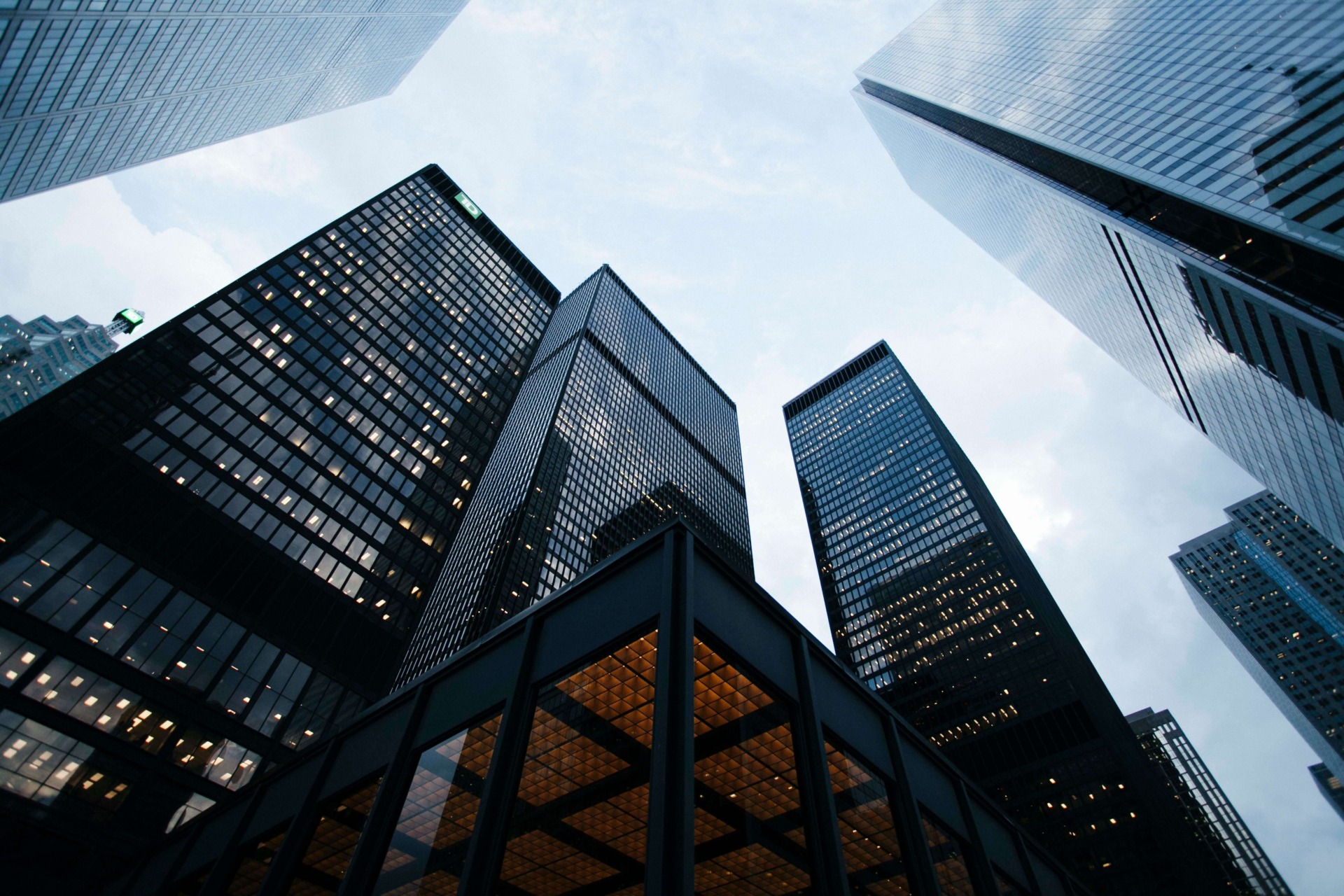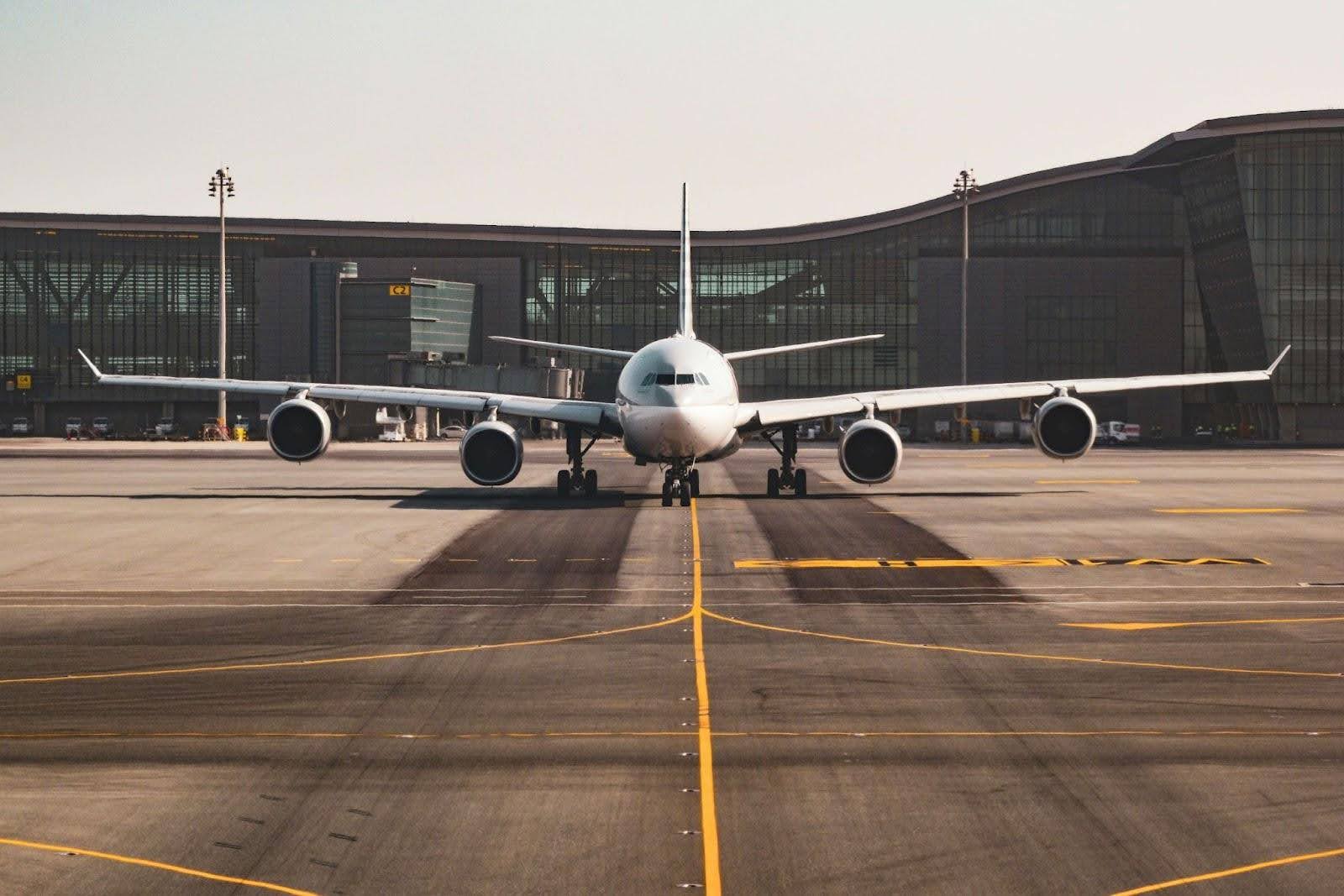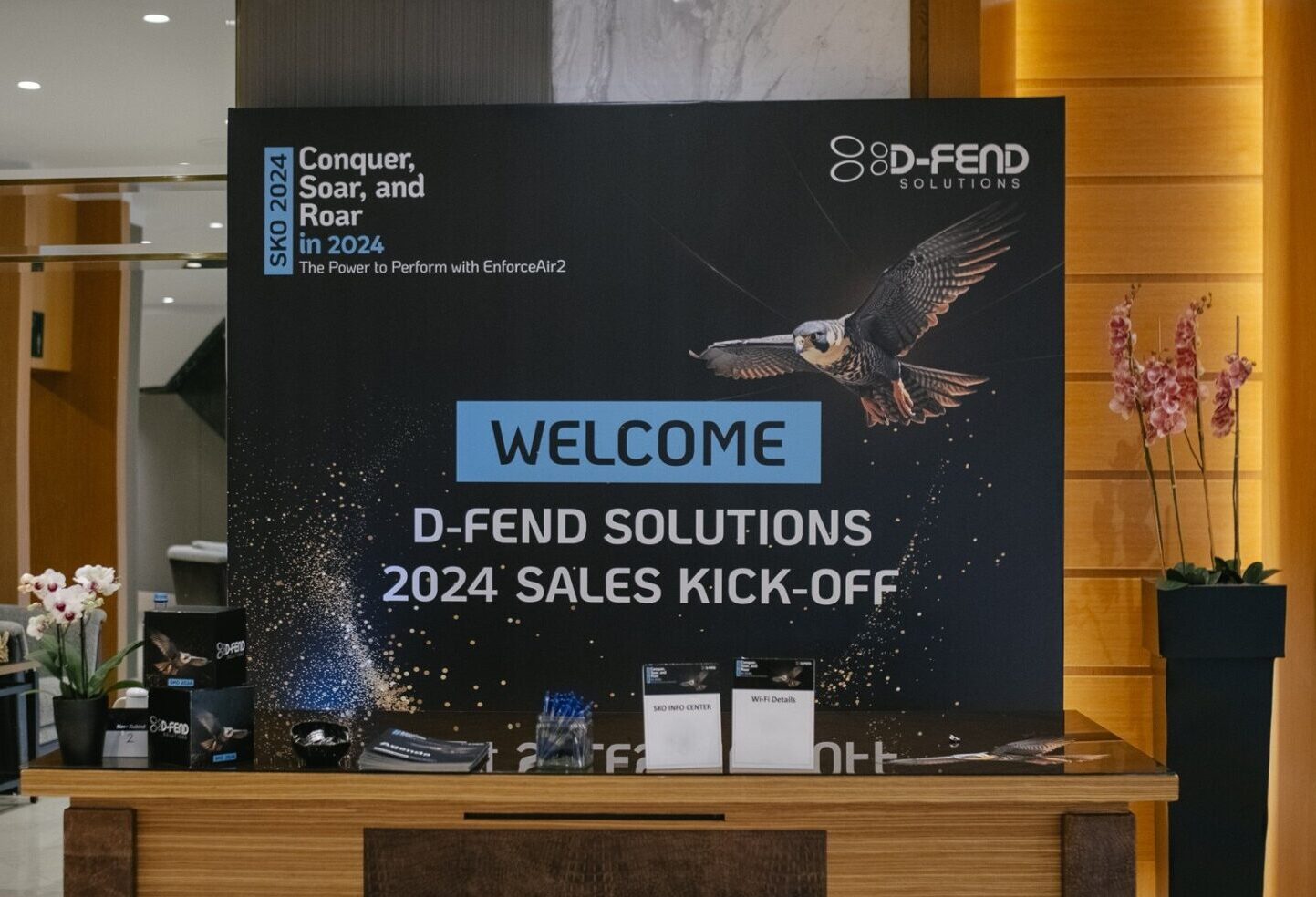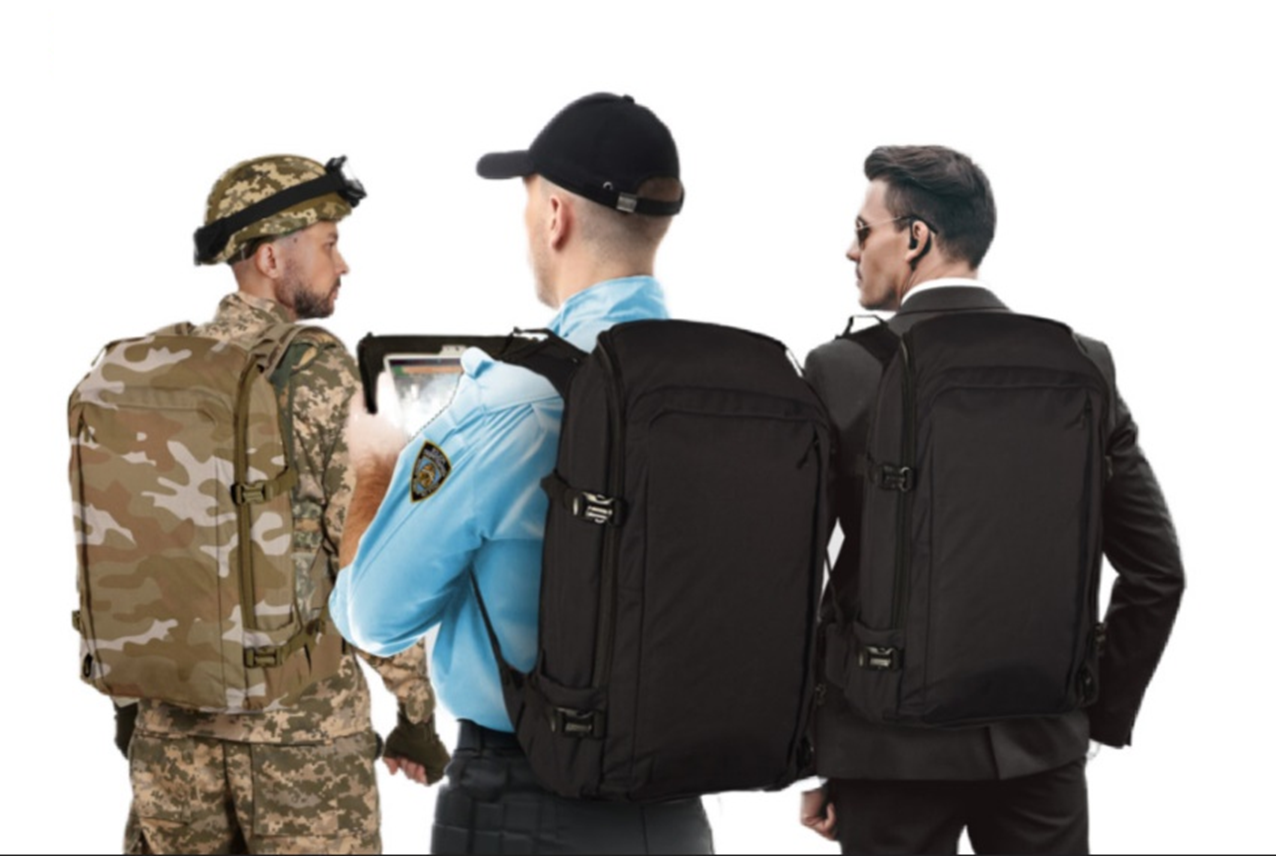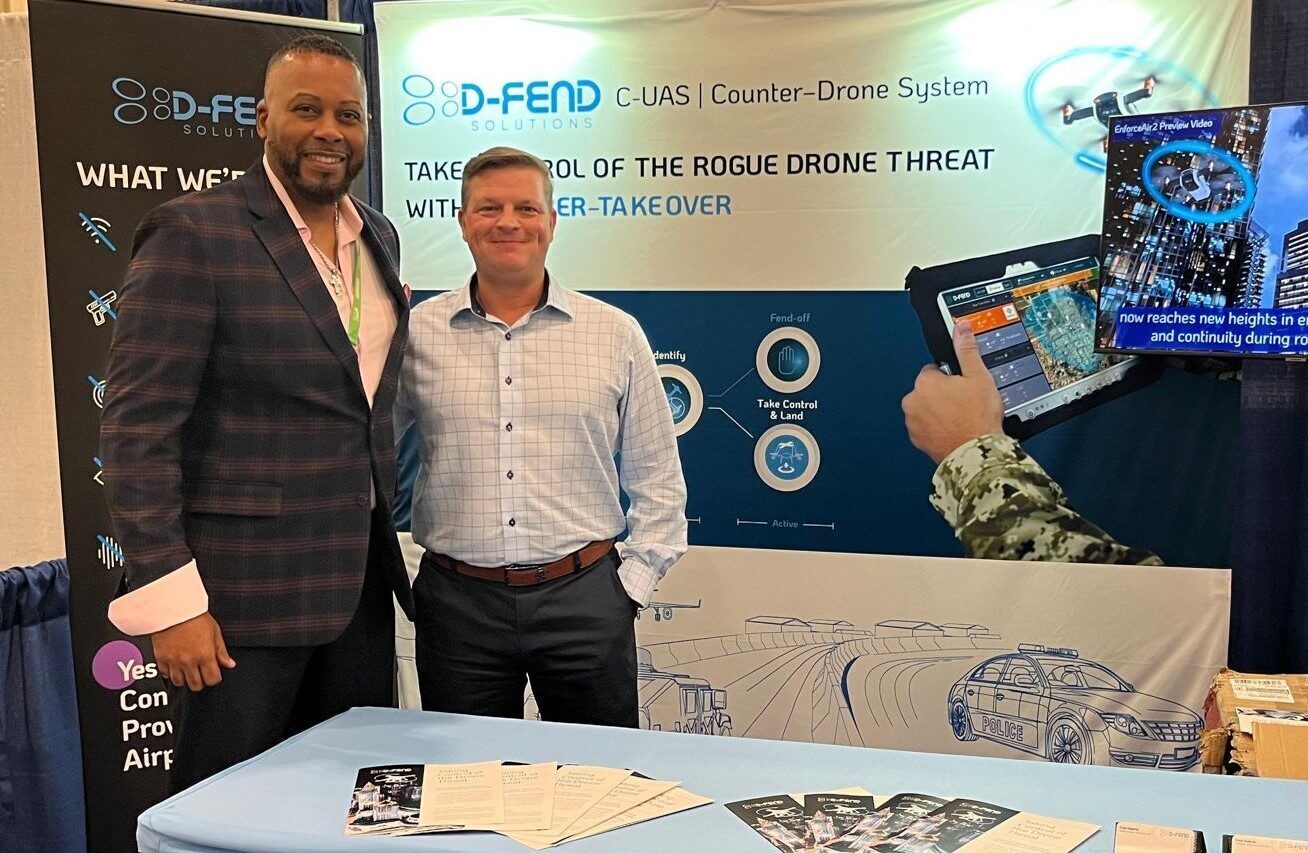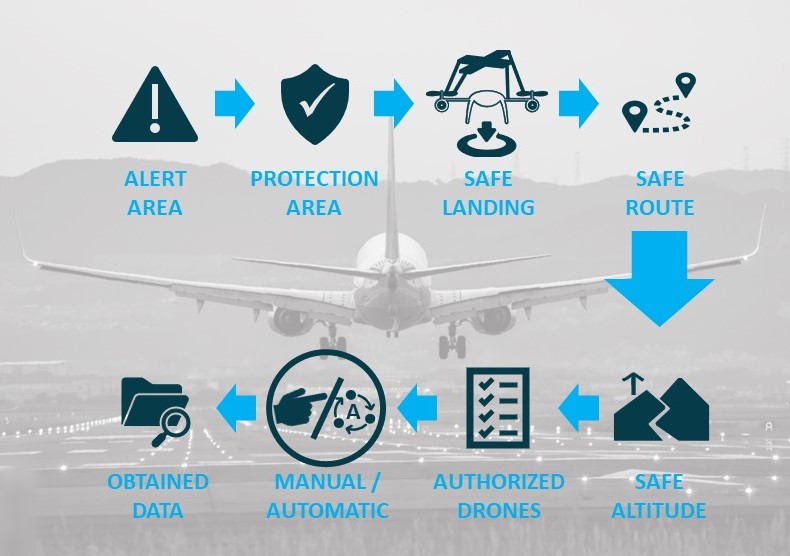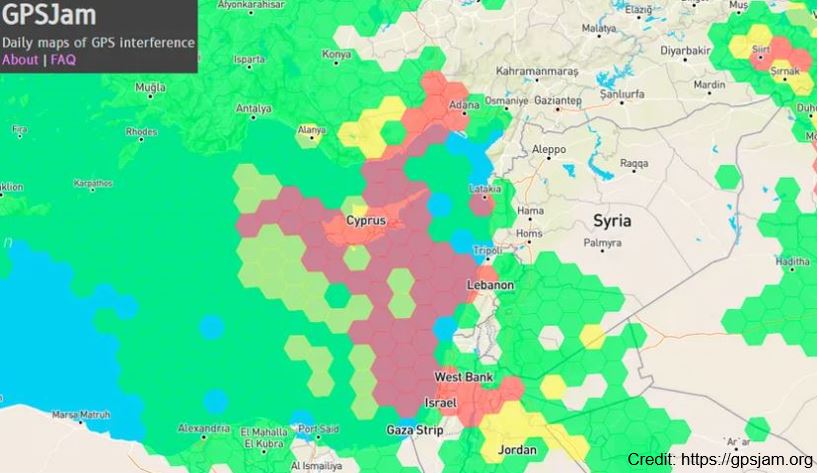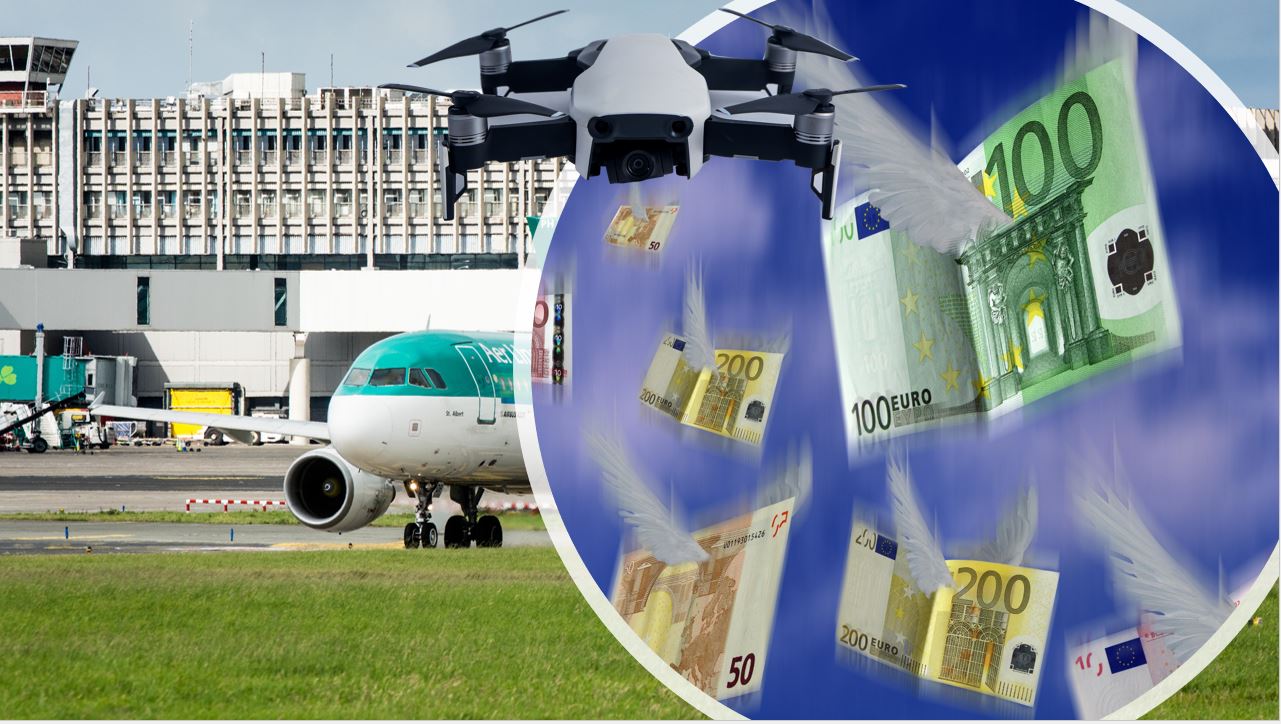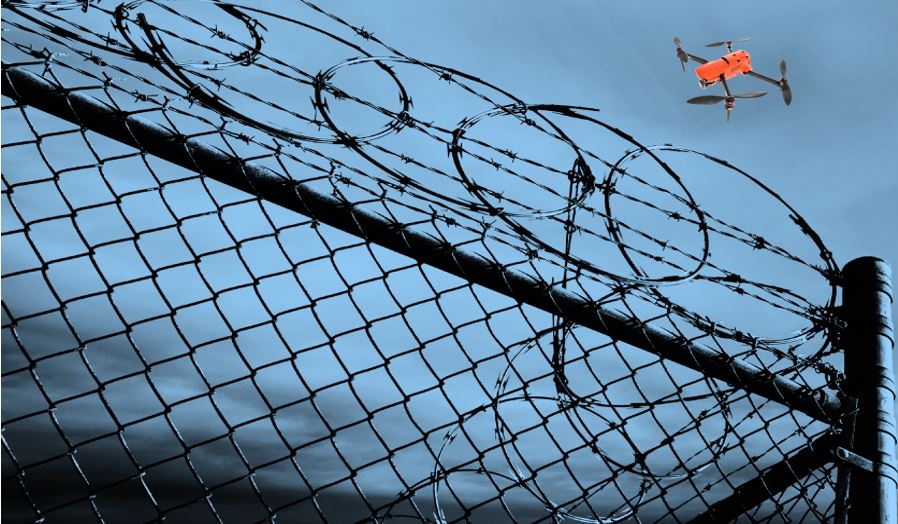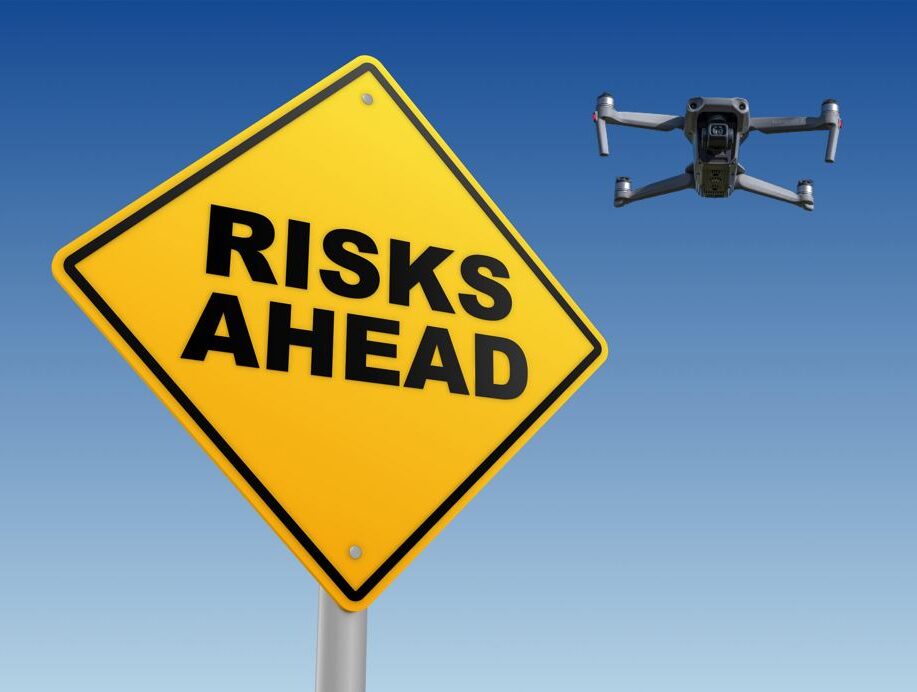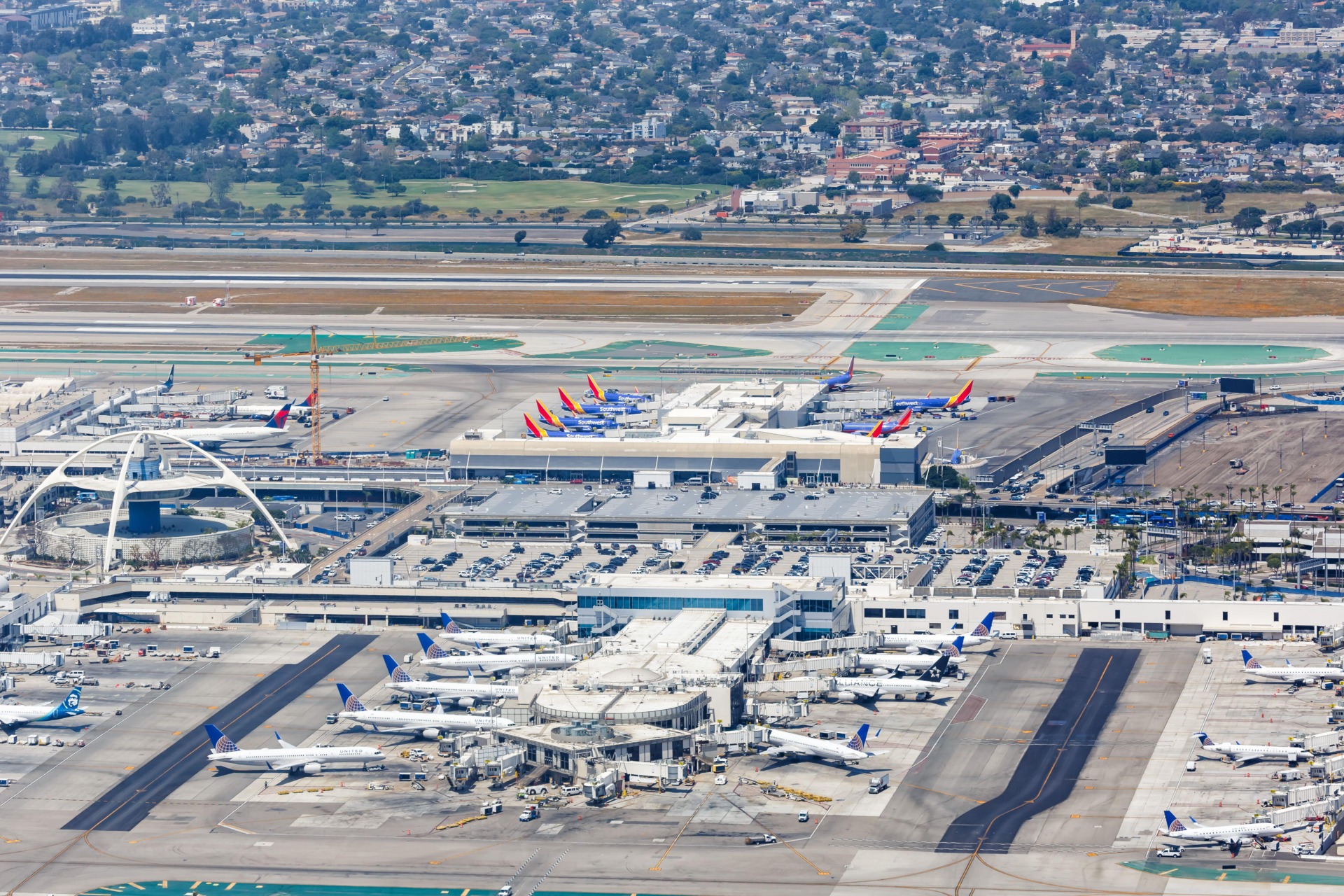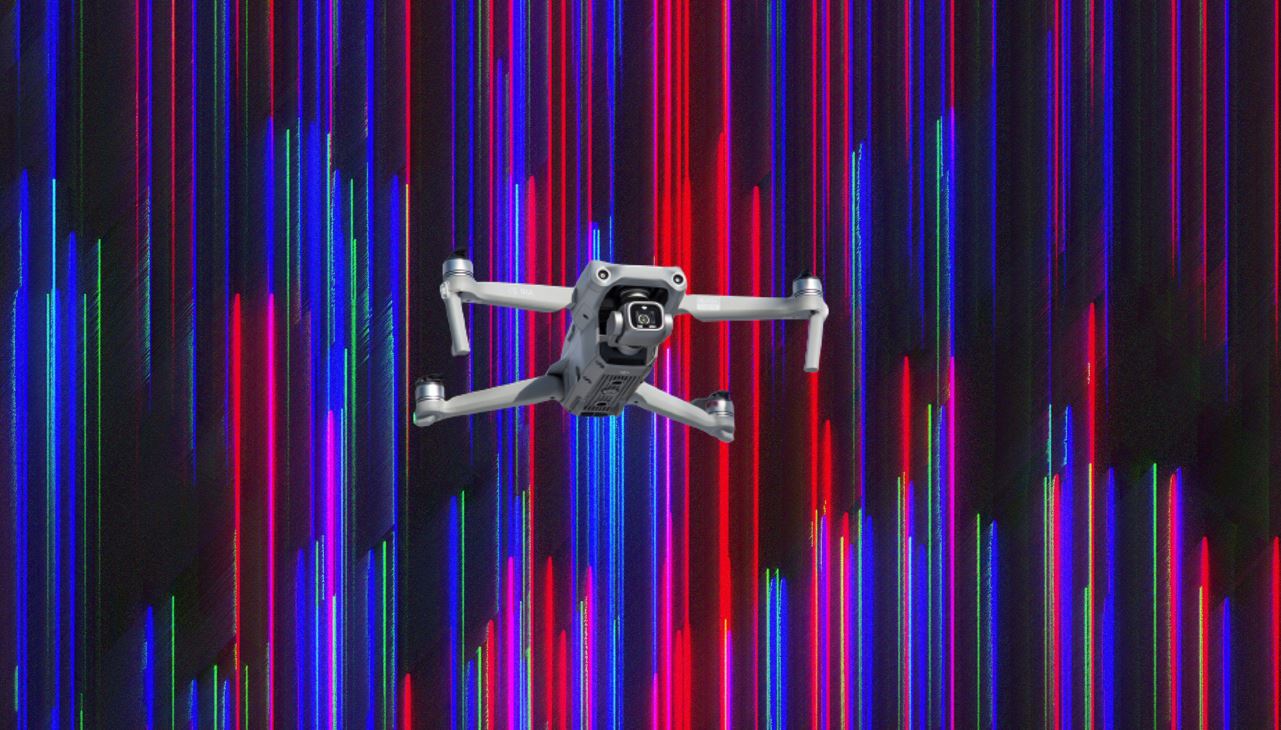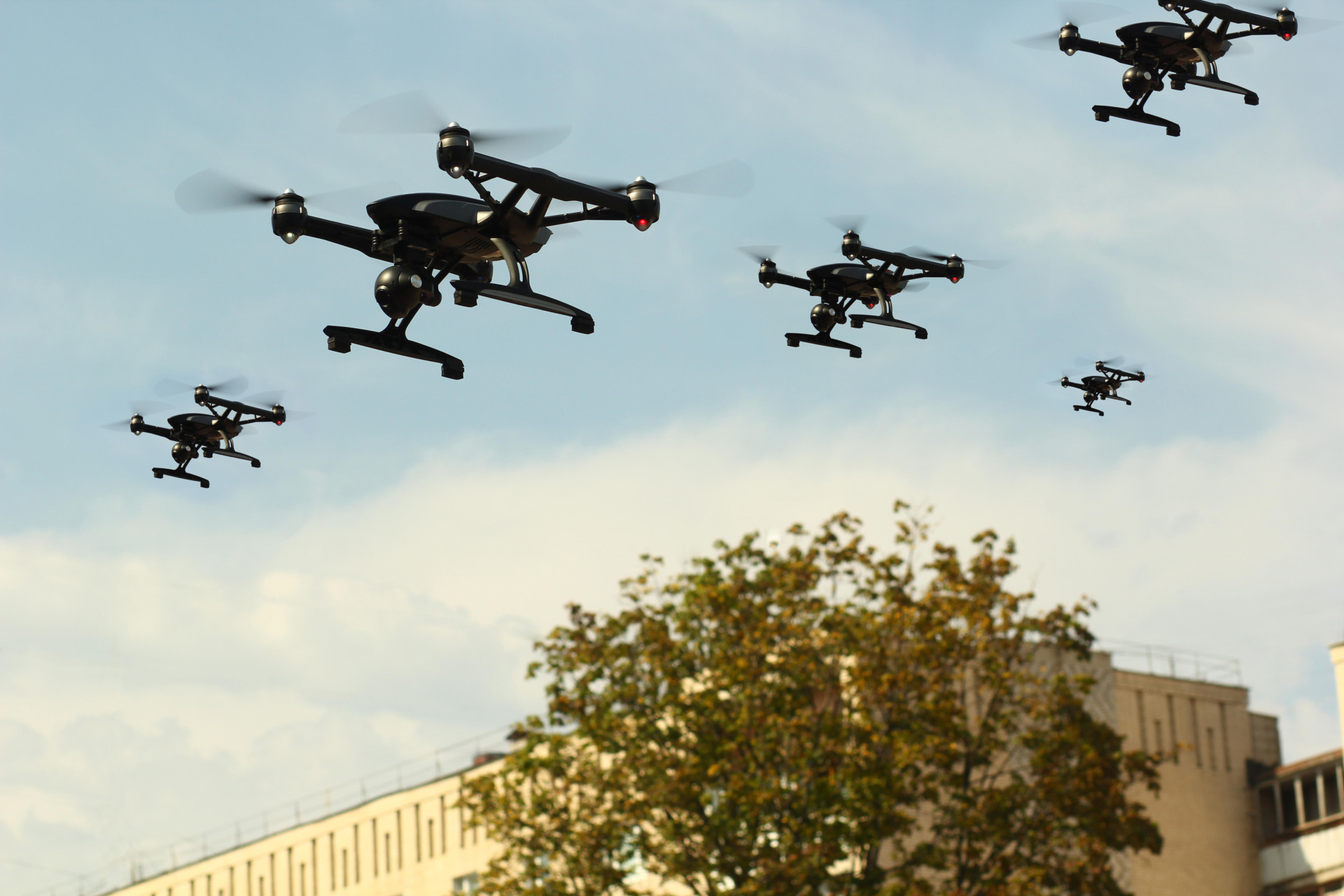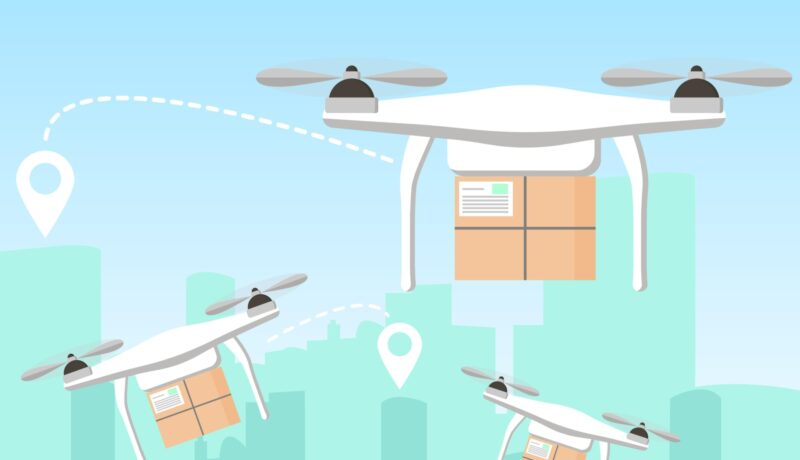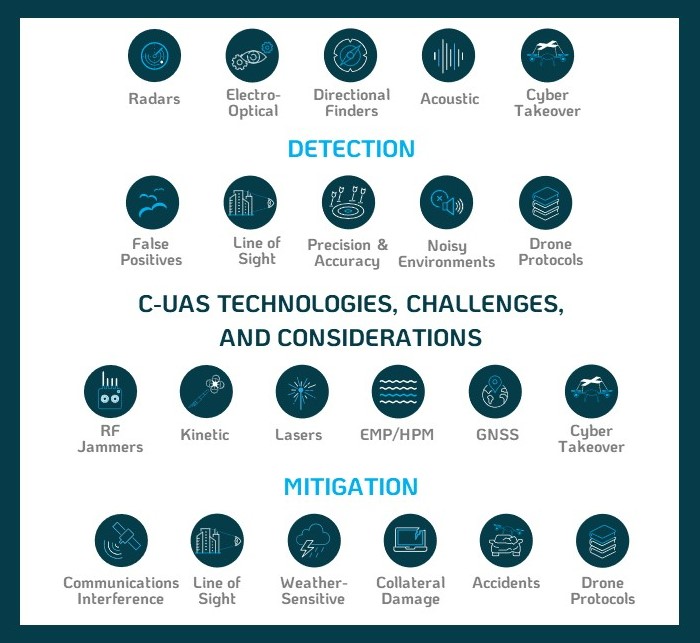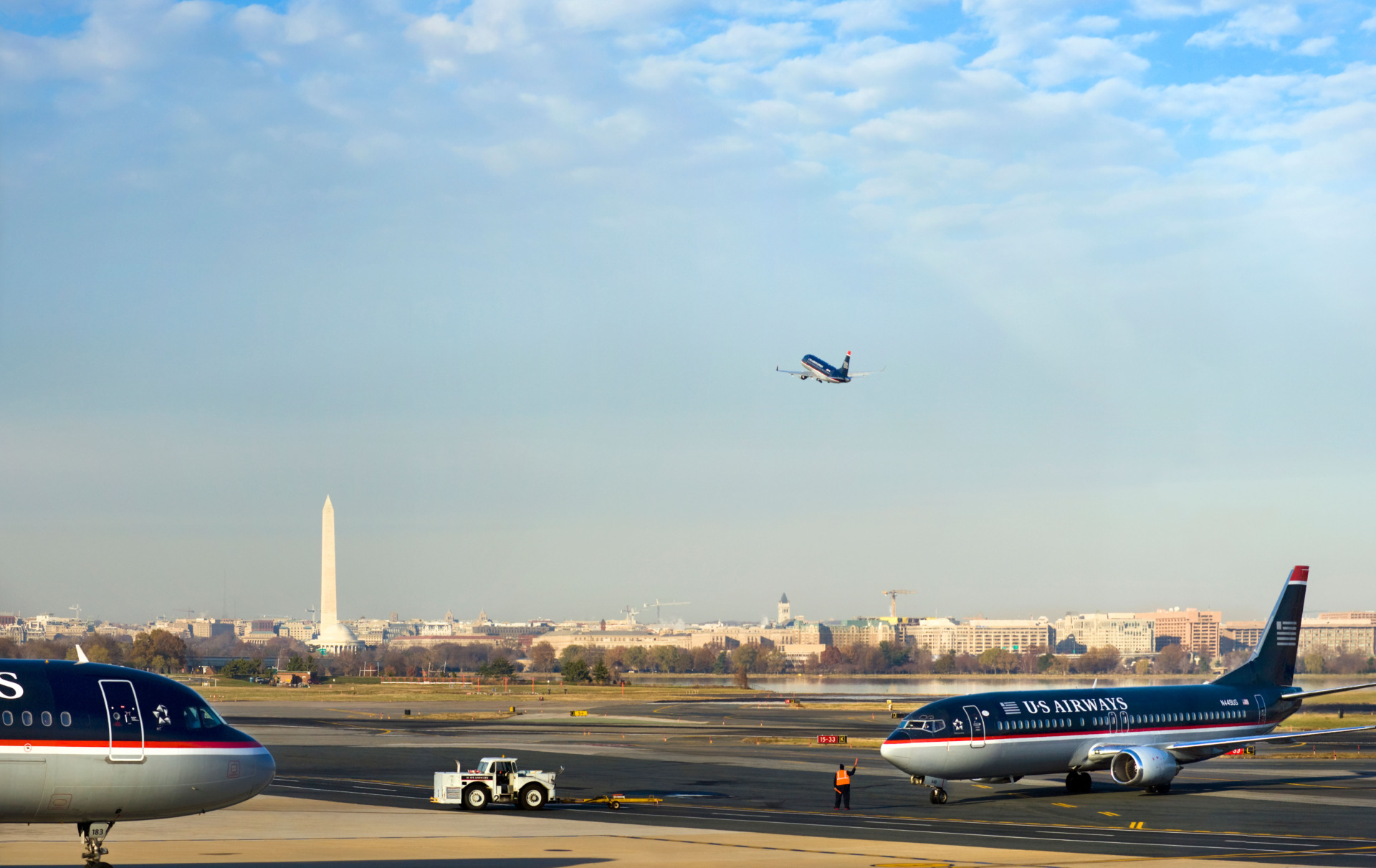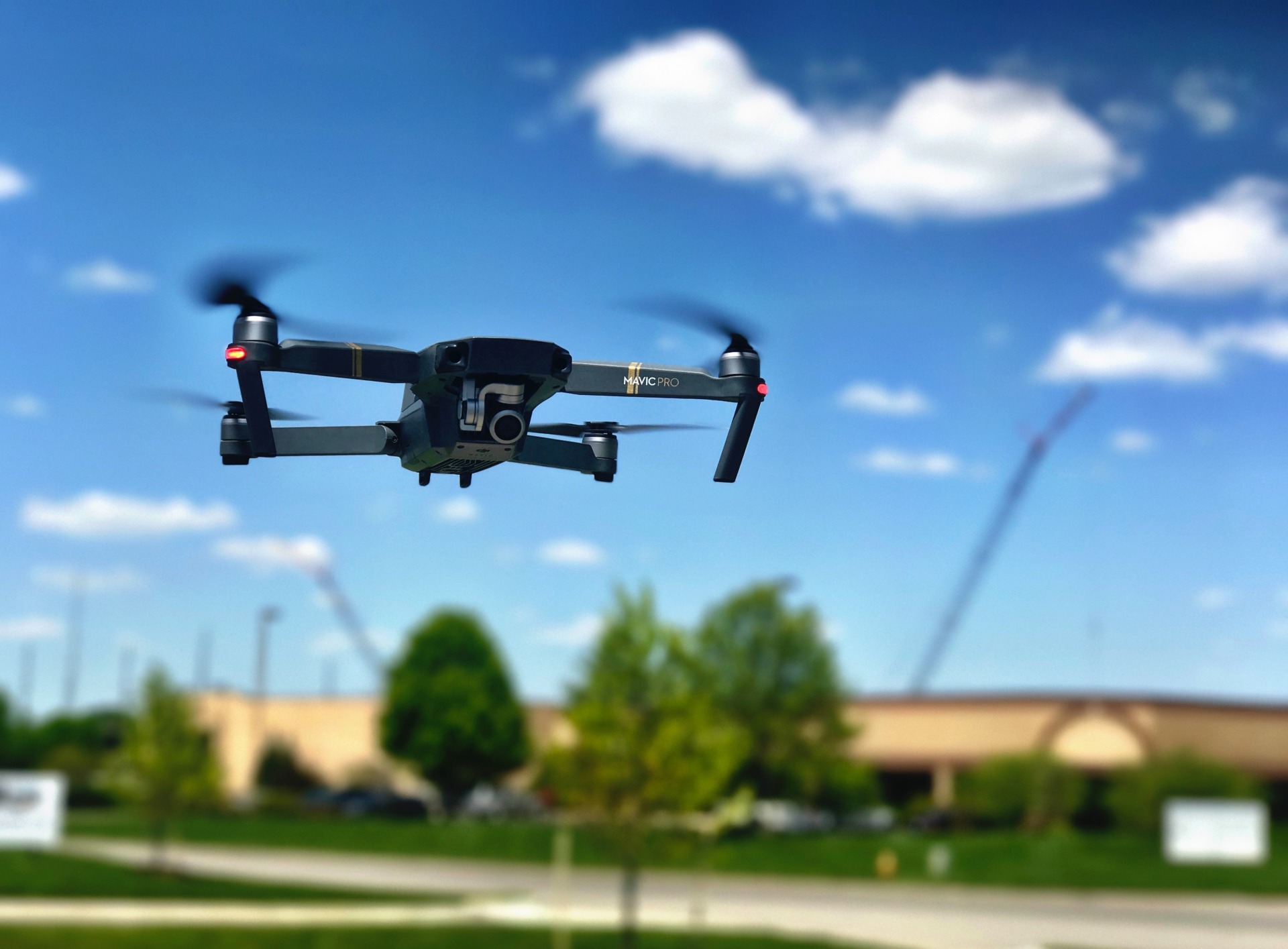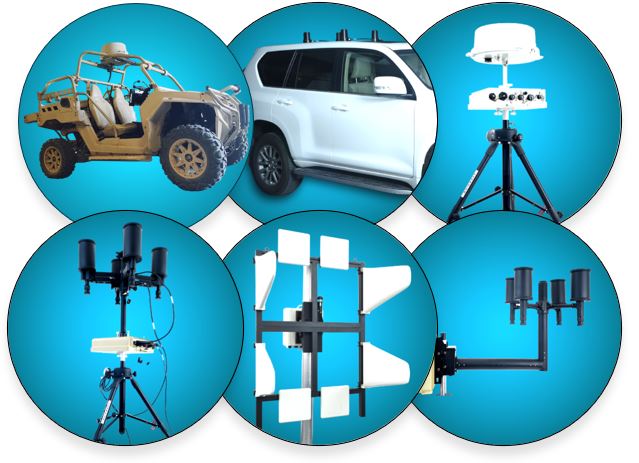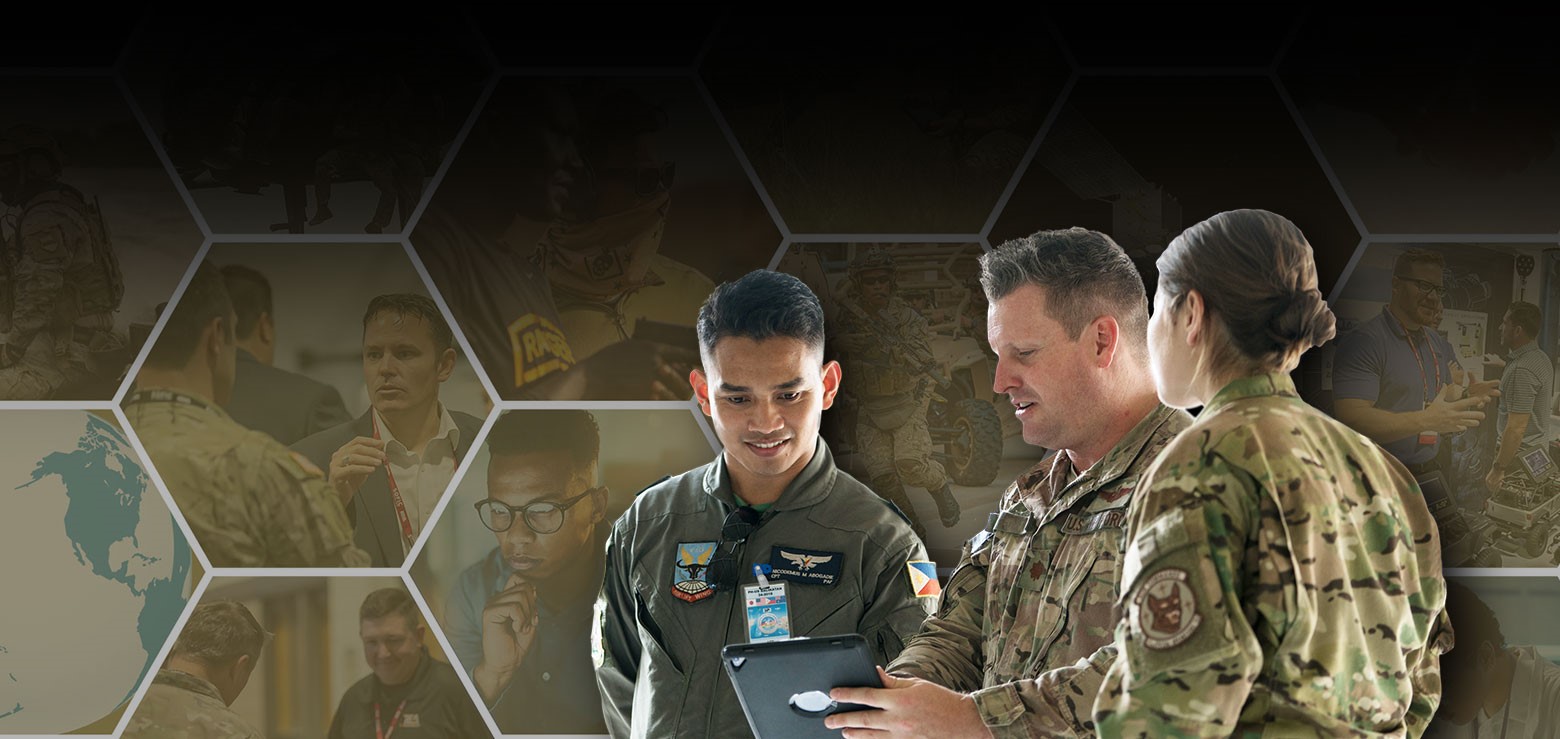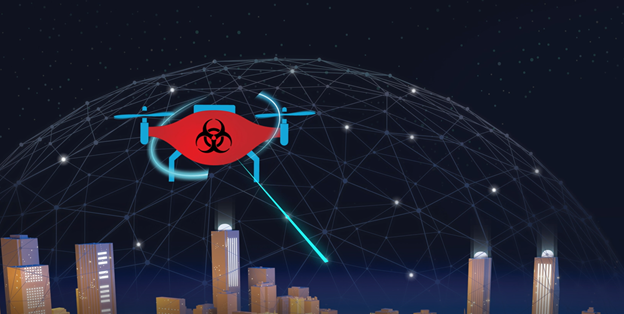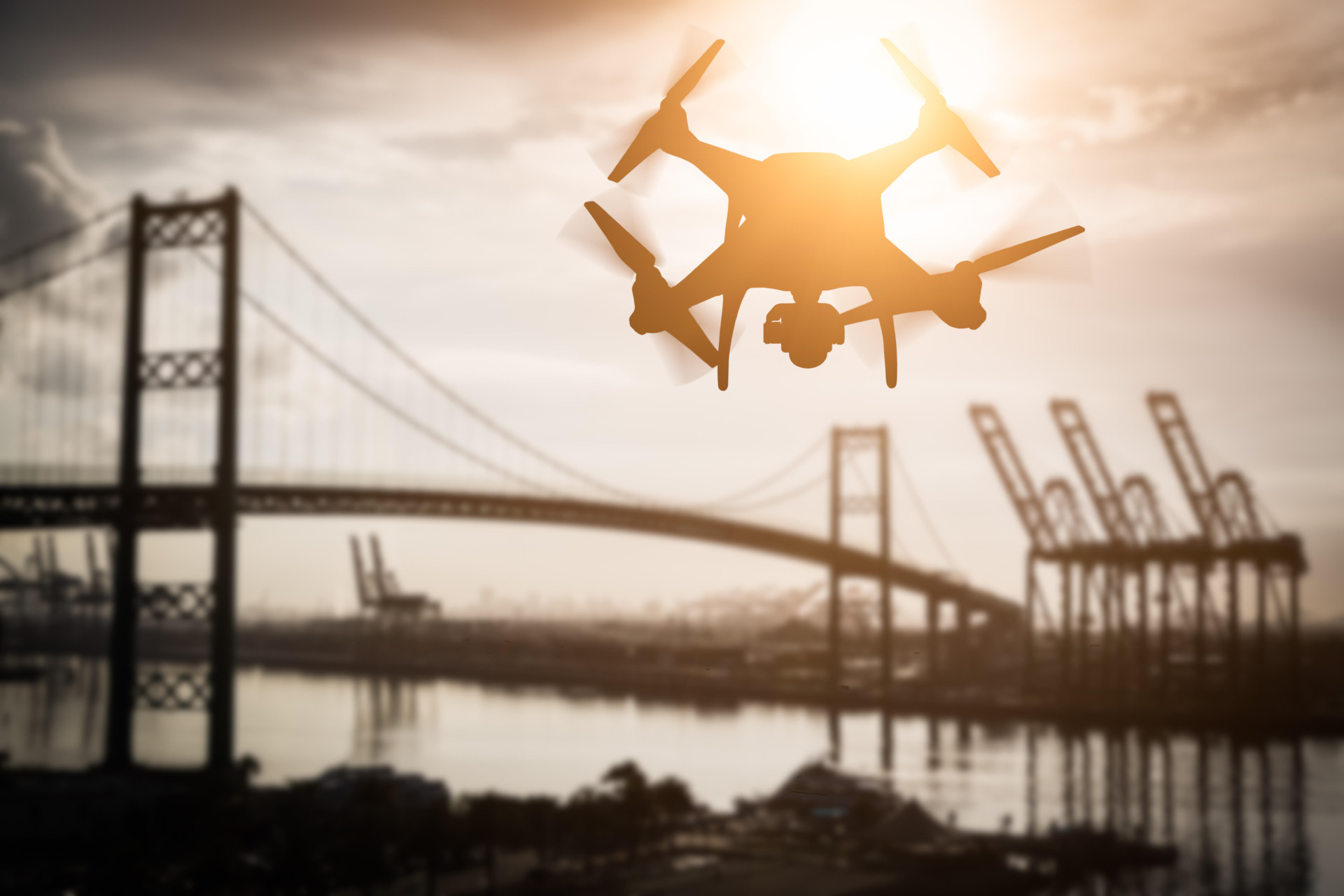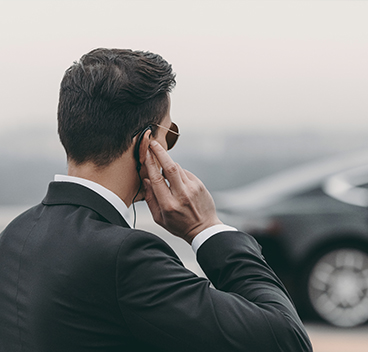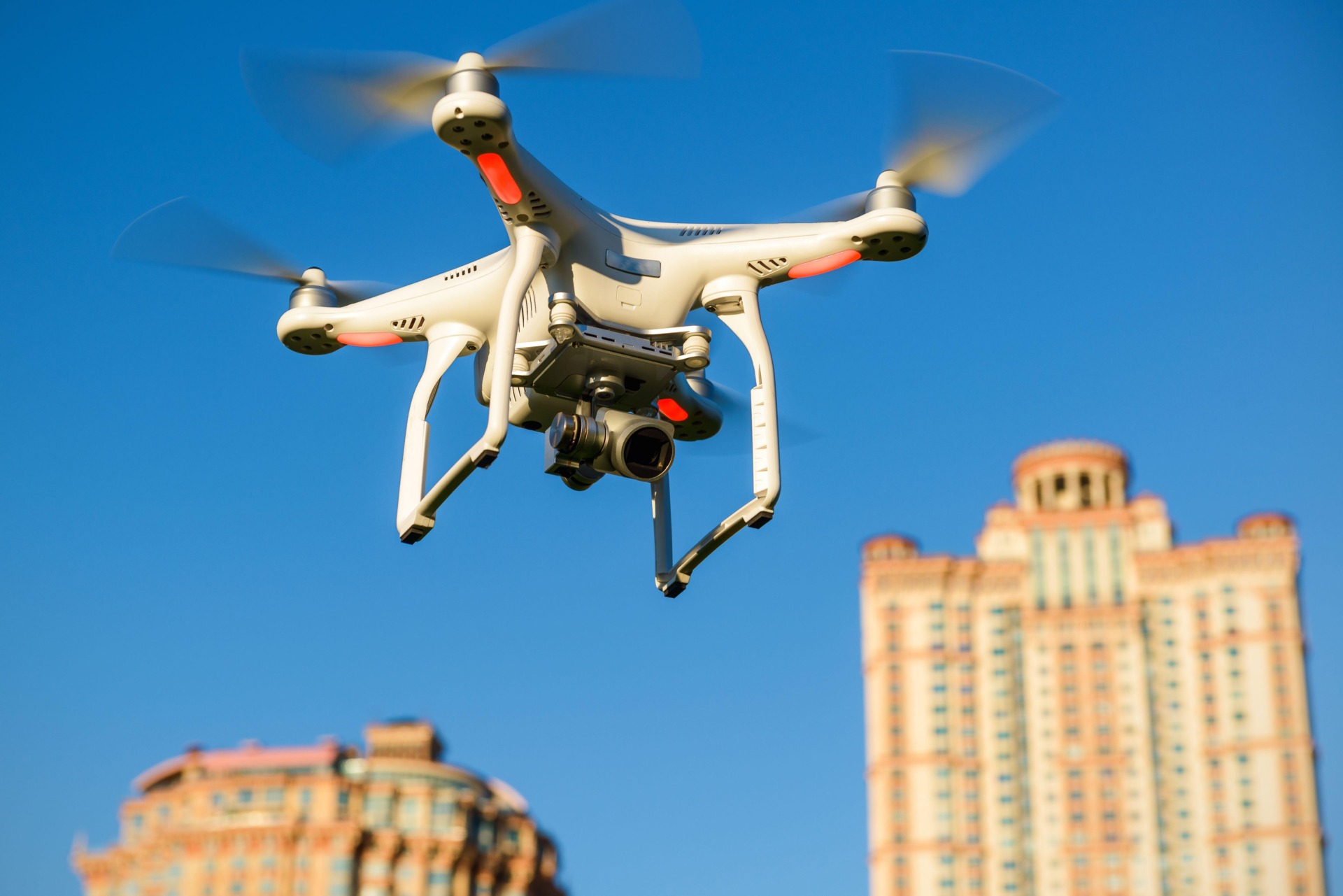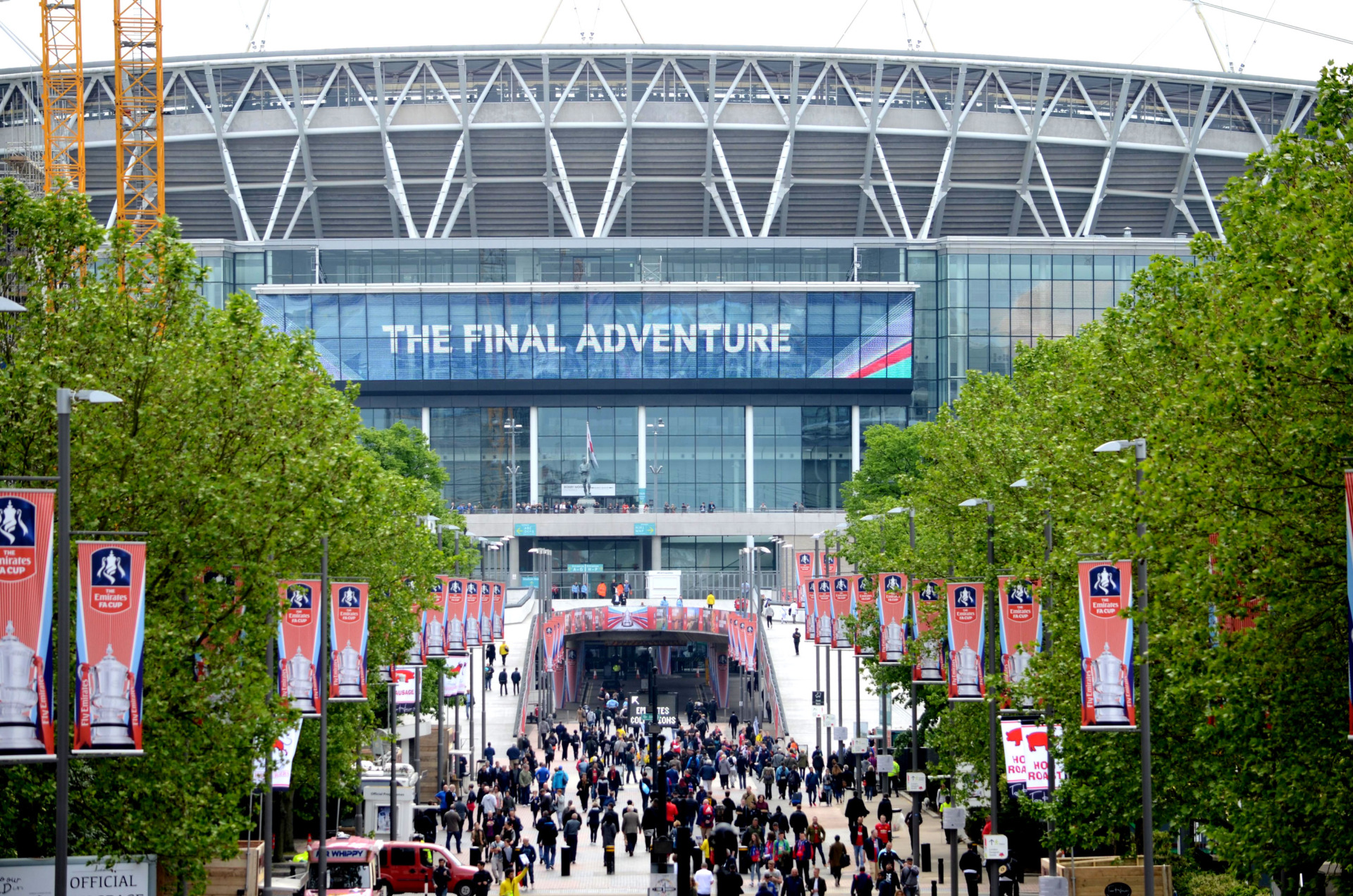
Drones and Danger Zones: Drone Defense for Nuclear Plant Security
In the ever-evolving landscape of security threats, critical infrastructure sites like nuclear facilities face an increasingly complex challenge: ...
As part of my role at D-Fend Solutions, I track open-source drone incidents in the public domain, which makes for a revealing journey into the world of drone-related challenges. To date, our Drone Incident Tracker includes over 900 incidents, providing a vast view of the ever-evolving drone threat landscape. Complementing this tracker, we have completed a year of sharing weekly Drone Incident Spotlights on social media. To mark this milestone, let’s delve into the insights and trends we’ve observed.
Unveiling Trends in Drone Incidents
Drone Incident Spotlights serve the dual purpose of providing a valuable resource for staying updated on the latest drone-related incidents and raising awareness of potential threats. The spotlights shed light on incident types, locations, and consequential impacts, offering anecdotal insights into emerging trends and patterns. These Spotlights play a role in raising awareness of the drone threat and advocating for responsible drone use.
Types and Locations of Drone Incidents
Over the past year, smuggling incidents were the most prevalent in Spotlight headlines, followed by harassment, nuisance, near misses, collisions, and privacy violations. Urban areas, particularly airports, prisons, and stadiums & arenas, emerged as hotspots for drone incidents. These insights emphasize the diverse challenges presented by drones and the need for policy and safe, controlled technological solutions.
Consequences and Prevention
Drone incidents can result in various consequences, from injuries and property damage to delays and disruptions. To address these challenges, a multifaceted approach is essential:
Let’s look at headlines from a few of the Drone Incident Spotlights that showcased the diverse challenges posed by rogue drones:
Spotlight #20: Dublin Airport Grounded Again
Spotlight #27: High-Stakes Encounter over Gatwick
Spotlight #23: Two Men Charged for Using Ten Drones
Spotlight #44: NJ Business Owner Faces Charges
These spotlights offer insights into the diverse challenges posed by unauthorized drones including, for example, airport disruptions, safety risks, and criminal activities. They highlight the need for comprehensive counter-drone solutions to enhance safety and security measures.
The Way Forward: Collaborative Prevention
As we navigate the complexities of the evolving drone threat landscape, it’s clear that a collaborative effort is required to prevent and mitigate incidents. By staying informed, educating the public, and employing effective technological counter-drone solutions, we can collectively work toward safer and more secure airspace.
Follow D-Fend Solutions on LinkedIn for more Spotlights, educational content, and industry insights to stay at the forefront of everything C-UAS.
In the first half of 2023, the wave of significant drone incidents continued to capture headlines, pointing to the need for effective counter-drone solutions, sensible regulations, and safer and more responsible drone usage. These incidents ranged from drone-enabled smuggling and unauthorized intrusions to collisions and technical malfunctions, impacting across sectors. This blog post provides an overview of notable drone incidents during this period, examining the sectors most affected and the countries facing these challenges.
United States:
Drone incursions are increasingly being used by cartels to smuggle drugs and monitor border patrols along the southern border for vulnerable entry points for both drug deliveries and illegal immigration. In one such incident reported in the news on January 18, 2023, Texas troopers described how they were followed by drones operated from Mexico while trailing a group of migrants.
The magnitude of the problem was highlighted by Gloria Chavez, Chief Patrol Agent of the U.S. Border Patrol’s Rio Grande Valley Sector, who testified that Border Patrol in the Rio Grande Valley sector of Texas faced over 10,000 drone incursions and 25,000 drone sightings in just one year.
India:
Drone-enabled smuggling of narcotics and arms across the India-Pakistan border has been on the rise. In the first half of 2023, India reported thirty cross-border drone incidents, of which twenty-four were in the state of Punjab. These occurrences represent 45% of Punjab’s total 53 incidents detected over the past three years.
The most notable of these drone incidents carried significant payloads –
March 10: Pakistan-based smugglers attempted to transport arms into India using a drone but were stopped by Border Security Forces. The drone was carrying an AK series rifle, two magazines, and 40 bullets.
April 12: A drone was used to transport 37 kg of heroin across the border from Rajasthan to Punjab, where it was seized by local law enforcement.
May 17: BSF foiled a major smuggling attempt near Kakkar village, shooting down a Pakistani drone and seizing over 15 kg of drugs dropped from the UAV.
Addressing the growing problem, Union Minister of State for Home Nisith Pramanik said that the government has taken several measures including round-the-clock monitoring of the borders by Border Security Forces (BSF), collaboration with the police, and making the general public aware of the problem and implications. The Home Ministry has also established an Anti-Rogue Drone Technology Committee (ARDTC) tasked with evaluating available technology to counter rogue drones.
In her blog, Drones at Prisons: “Everything Everywhere All at Once,” Sandra Welfeld explained how contraband smuggling into correctional facilities by visitors or corrupt prison officials has always been a problem, but now, the increasing availability of low-cost, easy-to-fly commercial drones brings a whole new type of contraband smuggling activity into the sector, fueling contraband trade within prison walls, forcing governments to act.
Drones are now persistently used to smuggle illegal items into prisons worldwide, heightening the danger and risk in the facilities. While Canada and the United States have the most reported incidents this period, drone-enabled smuggling has also been reported at prisons in the UK, France, Spain, Italy, India, Trinidad & Tobago, and the Maldives.
Canada:
Prisons in Kingston, Ontario topped the charts in Canada, with the Correctional Services of Canada seizing contraband and cannabis from three drone deliveries at Collins Bay Institution (March 5, May 17, and June 22) and from two incidents at Joyceville federal multi-level security institution (January 17 and February 20).
United States:
In the U.S., South Carolina had many reported drone-smuggling incidents with drug and contraband deliveries at McCormick (January 24), Ridgeland (March 23), Lee (March 23 & April 29), and Lieber (June 29) Correctional Institutions. Also of note, on April 4th, federal prosecutors charged two men for using 10 drones to drop methamphetamine, heroin, cocaine, tobacco, and cell phones into seven California prisons.
Like Prisons, another sector where illegal drones wreaked havoc during the first half of 2023 was Airports. Ireland, the UK, and the U.S. all experienced serious drone incidents at airports.
Dublin Airport had drone incursions that captured headlines six times from January 24 through March 2. Flights were grounded, diverted, and suspended, delaying thousands of passengers traveling to and from Ireland. Ryanair was the airline most affected by the closures, and the
Irish government vowed to tackle the drone problem.
In the UK, rogue drones not only posed disruptive delays (Edinburgh February 21, Gatwick May 14 with 12 flights diverted during a 50-minute incident, and Manchester June 19) but also posed serious safety issues on four occasions, as drones were spotted dangerously close to planes.
In the United States, an airplane pilot reported spotting a drone on the side of his aircraft while approaching Florida’s Palm Beach International Airport (March 1), five incidents of unauthorized drones operating in the airspace around the Westfield-Barnes Regional Airport in Massachusetts were reported over three weeks (until March 16), and operations at Pittsburgh International Airport were suspended for half an hour due to reports of an unauthorized drone sighting (June 5).
Communities and neighborhoods have experienced the harsh impact of the criminal use of weaponized drones, in various violent incidents:
Mexico – On May 3, criminal groups dropped DIY bombs on seven strategically important towns located along drug trafficking routes to attack witnesses and obstacles, and on May 8, in a second wave of drone attacks, they dropped 11 bombs on the previously targeted community.
These events are separate from drone incidents from careless users like the drone that crashed into a bush at Frontierland Disneyland, CA (Feb. 27), or the mischief of an individual arrested in Quebec, Canada for launching fireworks from a drone (April 14).
In the first half of 2023, drone incidents occurred across sectors, with Borders, Prisons, Airports, and Communities and Neighborhoods accounting for a major portion of the reported cases, as tracked by the D-Fend Solutions Drone Attack and Incident Tracker. Other incidents spanned multiple additional sectors, including Landmarks and Government Buildings, Stadiums and Arenas, Law Enforcement Agencies and First Responders, Military & Special Forces, VIP Protection, Critical Infrastructure, National Security & Homeland Security, Enterprise, Media, and Nature Preservation. These types of incidents encompass harassment and nuisance, collisions or near collisions, privacy breaches, espionage, and attacks.
The prevalence of drone incidents across sectors underscores the urgency of a broad approach to address the challenges posed by rogue drones. To ensure public safety and security amidst evolving drone technology, it is imperative for governments, security agencies, and industries to collaborate and implement effective counter-drone measures, stronger regulations, and responsible drone usage guidelines.
By understanding and learning from these incidents, officials can cultivate a responsible and sustainable drone ecosystem that fully unlocks the potential of this groundbreaking technology while safeguarding public safety and privacy.
In June 2023, we had the privilege of participating in the National Sheriffs Association (NSA) Conference. This influential gathering brought together sheriffs, law enforcement professionals, and industry experts from across the nation to discuss crucial matters related to safety, security, and the growing threat of drone attacks. We received invaluable insights into the urgent need for counter-Unmanned Aircraft Systems (C-UAS) solutions to safeguard major events, correctional facilities, and local communities.
With over 2500 attendees at the NSA Conference, our booth garnered continuous and steady interest, leading to numerous engaging conversations about the functionality and effectiveness of RF-cyber takeover technology in general, and D-Fend Solutions’ C-UAS system in particular. The event served as a platform for fruitful discussions and networking opportunities with industry professionals.
One of the most significant revelations at the NSA Conference was the keen interest shown by state and local law enforcement in utilizing C-UAS systems to fend off drone attacks at major events and prisons. For example, with an average of 4-5 major events with thousands of attendees occurring in each state in the US annually, sheriffs are constantly on alert for safety precautions and defense against drone threats. Just as important, C-UAS systems can play a critical role in state and local corrections departments. There is also an extremely high volume of contraband items being smuggled into prisons via drones on a weekly (and sometimes daily) basis. Corrections department professionals expressed a powerful desire for detection capabilities that can identify approaching drones and locate their pilots, providing significant support to local sheriffs and prison guards.
During the various sessions focused on drones and C-UAS, attendees expressed a sense of urgency in acquiring C-UAS capabilities as soon as possible. Stories of escalating drone threats reinforced the need for immediate action to mitigate potential risks effectively.
On the other side, on a positive note, in some places in the US, such as Chula Vista, California, drones are already being utilized in emergency situations to assist local police, firefighters, and EMTs in swiftly reaching the scene. The ability of RF-cyber technology to identify authorized drones while protecting the region from unauthorized ones received particular attention as it can protect operational continuity and ensure the safety of communities during emergencies.
During the event, we discussed how RF-cyber is profoundly different than jamming techniques. We engaged in discussions about the safety and effectiveness of this technology compared to other mitigation approaches, addressing concerns and reassuring attendees about the reliability of this novel solution.
As a result of our participation in the NSA Conference, we have scheduled multiple demos across various states. This widespread interest highlights the urgent need for C-UAS systems to combat threats during local parades, outdoor concerts, and major holidays.
The NSA Conference provided us with valuable insights into the pressing need for C-UAS systems to protect major events, correctional facilities, and local communities from the growing threat of drone attacks. The event showcased the high demand for immediate solutions and staunch support for obtaining such capabilities from sheriffs, the corrections departments, and local law enforcement agencies. As we continue to collaborate with industry professionals and demonstrate the effectiveness of our C-UAS across various states, we stay more committed than ever to enhancing safety and security while empowering state and local authorities to effectively respond to emerging challenges in the drone landscape.
The start of 2023 has seen drone incidents at prisons happening everywhere, which brings to mind the title of the current movie “Everything Everywhere All at Once.” Considering its 11 Oscar nominations, perhaps there is potential for a new movie next year, with drone incidents affecting everything, everywhere, all at once.
Just in the last week of January alone, as shown in our Drone Attack & Incident Tracker, there were multiple prison drone incidents, reflected in these news headlines:
Contraband smuggling into correctional facilities has always been a problem, brought in by visitors or corrupt prison officials. While laws and regulations are clear about what’s allowed in prisons, the increasing availability of low cost, easy-to-fly commercial drones has opened a whole new type of contraband smuggling activity in the sector.
In recent years, drones have been persistently employed for smuggling illegal items into prisons, heightening the danger and risk in the facilities.
“The contraband drop-offs by drone have become a nightly battle at state prisons and continue to fuel an illegal, high-demand trade among inmates, supplying them with drugs, tobacco, knives and some with cellphones, which the state prisons chief said is a top threat to public safety, allowing some to arrange drug-trafficking operations and even plot murder.” (The Post and Courier, Columbia, Feb. 5, 2023)
Security agencies around the world are looking for effective counter-drone strategies and solutions that can minimize the risk from drone delivered contraband. While flying drones above and around prisons is usually illegal, this hasn’t stopped criminals from trying. Lack of budget or personnel to prevent these incidents further exacerbates the problem.
In Spain, drone incidents in prisons multiplied in the past year, leading the Interior Ministry to advance implementing effective counter-drone solutions to detect and mitigate drones. The Ceuta prison measured an average 30 to 40 drone flyovers per day.
“In many cases, drone entry inside walls is dangerous. For instance, one crashed into the officials’ parking lot; another one injured an official and caused bleeding from the propellers, which are barely visible and move at high speed… In general, the drones carry packages with hashish and medication, but they could also possibly carry weapons, making this method much more dangerous,” warns a prison official from Ceuta, in a conversation with THE OBJECTIVE.” (The Objective, Spain, Dec. 28, 2022)
Many counter-drone solutions in the market offer to provide a safer airspace environment around prisons. While lack of budgets may hinder the quick adoption of such systems, many governments have come to understand that ignoring the threat is not an option. In the state of Wyoming, a new bill to prohibit drones over prisons has been approved by the Senate, even though there haven’t yet been many incidents in the state. As the Wyoming Department of Corrections Director Daniel Shannon stated, “it’s just a matter of time. Throughout our nation, institutions are having more and more episodes.”
While some institutions have experimented with traditional counter-drone solutions, it is apparent that such an approach may bring other hazards. For example, a jammer may interfere with a prison’s communications system, with security implications. A kinetic solution could cause collateral damage to prison assets, inmates, or staff..
Ultimately, prisons must adopt a solution to detect and alert the presence of a drone; locate and track the drone, the pilot/remote controller, and the take-off position; identify whether it is an authorized or unauthorized drone (as an increased number of institutions utilize drones today to monitor prison grounds and inmates); and then ultimately mitigate the rogue drone, as allowed by local regulations and carried out by authorized staff..
D-Fend Solutions sees prison security as an increasingly common and critical use case for EnforceAir.
Rogue drones smuggling contraband – weapons, drugs, cellphones, etc. – has been an issue for years, but it seems to have significantly spiked in the past month or two, with high-profile recurring incidents around the world.
Most recently, 20 people were arrested after an eight-month investigation into drone smuggling at a South Carolina prison. The details are incredible. CBS News reports:
“…officials have seized an estimated 100 pounds of tobacco, 13 pounds of marijuana, 843 grams of methamphetamines, 114 grams of crack cocaine, 49 grams of cocaine, 12 drones, three guns, two knives, 25 cellphones and $6,393 in cash. Authorities also discovered abandoned drones in the woods near the prison’s fences that contained about 100 grams of meth and five pounds of tobacco.”
During the latest sting, there were multiple, separate groups trying to fly drones over the prison fence simultaneously!
Colombia recently had a similar issue at the maximum-security Tramacúa Prison in the northeastern city of Valledupar, according to DroneDJ.
“That drone delivery activity was described as transporting the usual kind of contraband into the prison – notably cell phones, SIM cards, tobacco, and cannabis.”
The province of Málaga, in Spain, was also hit last month. EuroWeekly reports that two drones were observed flying over the Alhaurin de la Torre Penitentiary Centre on two consecutive days in January 2022. The article notes that Penitentiary Institutions recorded 14 incidents involving drones being detected flying over Spanish correctional facilities. Imagine how many were not detected…
Back in September, a prison in Ecuador was targeted with explosives, allegedly by a drug cartel, according to DroneDJ:
“…three drones dropped their explosives payloads on the roof of a prison facility in Guayaquil. According to a tweet posted by Ecuador’s penitentiary administration, the strike hit the Regional Guayas 4 rehabilitation center next to the main prison holding most inmates. Included among those are members and leaders of gangs affiliated with rival international drug cartels, particularly those in Mexico, which may now be using drones to strike at one another.”
Canada has not been immune. Wings magazine wrote that police in Winnipeg found drones were dropping massive quantities of drugs into federal prisons – including several million dollars’ worth of methamphetamine, fentanyl, cocaine, marijuana and other drugs. Approximately 40 firearms were also seized.
There were some of the recent biggest incidents, but the list goes on and on and on…
Everyone in the prison sector recognizes that rogue drones are a major problem, but many leaders seem unsure of how to proceed. Budgets are often tight, but what makes more sense? Proactively spending money to stop the inevitable drone intrusions, or retroactively funding large investigations into massive smuggling operations after malicious acts were committed?
Even security teams that have decided to act may be confused as to the best course of action. Direction finders, cameras, acoustic solutions and radars may have some utility for detection, but what is their value to prison security teams without the ability to identify and precisely locate hostile drones AND their pilots? Also, authorized professionals should be able to mitigate rogue drones being used for illegal activities. Absent the ability to capture the drones (and their expensive cargo) and find the responsible pilots, the cycle will continue.
Kinetic mitigation solutions can cause collateral damage when projectiles are used and could cause the contraband to plummet down to the prisoners. Jammers can be effective at mitigation, but they can disrupt a prison’s (and other nearby) communication systems. Also, when jamming ceases, the drone pilots could regain control, and returning the drones back to sender means not capturing the contraband, likely leading to future attempts.
Counter-drone, radio frequency-based, cyber-takeover clearly can play a role here. Prison security teams will be able to automatically detect, identify, locate and control rogue drones, land them safely, confiscate the contraband and even identify the location of the pilots.
Keep informed regarding future prison incidents by following D-Fend’s up to date drone incident tracker.
Drone tracking methods and the associated technology are constantly evolving, but there is an important capability that many security teams are currently overlooking…
Drone detection apps have popped up in recent years. Most of these are simple user interfaces that integrate wit
One notable exception is AirMap, an aeronautical data & services provider that enables app users to “view publicly-shared flights happening around the world.” This can be helpful, but what about rogue drones that are not reported/publicly shared?
Radars have been a traditional favorite of security teams, but a DroneDJ article correctly notes that many radar systems possess limitations, making it difficult for organizations to effectively monitor urban or sensitive environments:
“Radar is best used in open areas as trees and other ground objects can show up on the radar, creating false readings. Many radar systems today have a vertical detection range of about 10 to 30 degrees, which is not enough when trying to detect drones flying at all sorts of heights.”
D-Fend Solutions’ white note, “Drone Detection Technologies: Traditional vs. RF Cyber,” highlights the advantages and limitations of other traditional drone tracking technologies, such as electro-optical, directional finders and acoustic.
Radio frequency (RF)-based, cyber-takeover solutions track the communication signals used by commercial drones, without false positives or the need for line of sight. It is then possible to determine the type of drone and its position with GPS accuracy. This includes the take-off position near the pilot in real-time.
This often-overlooked feature, which is NOT available via many of the traditional drone tracking solutions, is a must-have.
For instance, for military forces engaged in constant asymmetrical warfare with terror groups, merely detecting rogue drones, and even mitigating them, is not enough. Terrorists can easily order another cheap commercial drone to replace the one that was lost. Stopping this potentially deadly cycle requires quickly discovering the location of the terror cell(s) launching the drones.
Border guards and prison personnel face unending smuggling attempts via drone. Tracking and then mitigating these drones is crucial for preventing dangerous contraband from entering, but if the pilots are not located, attempts will continue.
Security personnel evaluating C-sUAS systems should carefully consider the pros and cons of the different types of drone tracking systems and ensure that their eventual pick offers geolocation of the drone pilot.
Read more:
– EnforceAir, a counter-drone system
Drones smuggling contraband into correctional facilities is still a major problem. An Associated Press story notes that following a deadly prison riot at Lee Correctional Institution, officials took counter-drone measures:
Since the riot, numerous security improvements have been implemented across the prisons system and specifically at Lee, including…systems to detect cellphones and drones, which could be used to ferry in contraband.
DroneDJ, a site with its finger on the pulse of the latest developments in the drone and counter-drone ecosystems, also recently took note of the rogue drone scourge plaguing prisons:
Drone deliveries to penitentiaries are surging in many countries. Several US states have warned about escalating infiltration by craft. French jails have similarly reported two to three drone delivery flights per week. The UK formed a special panel in 2017 dedicated to turning back the tide of drones flying into the nation’s prisons – without resounding success.
And back in June, Montreal police arrested two suspects after a drone was spotted flying over the walls of Bordeaux Prison. Officers arrived and saw two men standing nearby. The suspects ran, but were eventually apprehended. CBC News notes: “According to Radio-Canada, 32 drones have been spotted flying over the Bordeaux Prison since 2013…”
Despite the widespread and serious nature of this problem, many prisons still have not invested serious planning or resources into stopping rogue drones. The Union of Canadian Correctional Officers (UCCO-SACC-CSN) called efforts by Correctional Service Canada (CSC) to stop smuggling into prisons via drones “insufficient.”
The CSC has pledged to install advanced radar equipment for drone detection, but this step obviously does not address rogue drone mitigation, which is subject to relevant regulations and authorities on a per-country basis:
“Once a drone is detected, how will we get our hands on the package before the inmates do?” asks Frédérick Lebeau, Quebec Region President of UCCO-SACC-CSN. “For now, CSC is dragging its feet: there have been preliminary discussions about securing cell windows and putting roofs over the prison yards, but nothing more. If no effort is made to intercept packages, the radar won’t do much good.”
Meanwhile, Urban Air Mobility News reports that last year in Bavaria, “special rifles” were provided to prison officers to shoot drones that got close to prisons. But this kinetic solution can only be applied to drones that officers manage to detect, and it requires clear line-of-sight, which is often not available at large correctional facilities. Perhaps it was these concerns that caused Sebastian Brux, spokesman for the country’s justice administration, to state, “There are doubts as to whether these launchers are of any practical use,” according to Urban Air Mobility News.
So, what is the correct counter-drone solution for correctional facilities? Prison officials should look for an integrated, end-to-end solution that can handle both rogue drone detection and mitigation (again, subject to regulations), greatly reducing the chance of human error. Because communications systems are vital at a prison, the counter-drone system should not feature jamming technology as a main component. Also, some prisons today utilize drones to monitor the prison grounds and work performed by inmates. An ideal solution should distinguish between authorized and unauthorized drones.
Most importantly, an optimum solution for detention centers would facilitate full control, enabling officers to capture the drone, confiscate the contraband and reap the benefits of the intelligence the drone will provide, without disrupting operational continuity of the prison.
Learn about D-Fend’s anti-drone solution for prison’s security
In the ever-evolving landscape of security threats, critical infrastructure sites like nuclear facilities face an increasingly complex challenge: ...
Miniature unmanned aerial vehicles (sUAVs), categorized by the Department of Defense as Types 1 and 2, encompass a wide array of aerial systems ...
The soaring popularity of drones has ushered in a new era of convenience and innovation. However, their increasing presence has not come without its ...
Enhancing Modern Naval Defense Against the Ever-Present Drone Threat: The proliferation of commercially available drones, or Unmanned Aerial Systems ...
The commercial drone industry has revolutionized efficiency and safety across numerous sectors. However, this versatility also presents a growing concern: ...
The rapid proliferation of cheap commercial drones, particularly those manufactured by Chinese companies, is creating a significant security challenge for ...
Drones, with their rapidly advancing design and functionality, could potentially become the weapon of choice for terrorists seeking to conduct ...
The rapid advancement of drone technology has fundamentally reshaped airspace dynamics, with UAVs finding applications across a myriad of sectors. This ...
The drone threat landscape is constantly evolving. From the battlefield all the way to our own neighborhoods, keeping the skies safe and confronting ...
The swift evolution of Unmanned Aircraft Systems (UAS) has ushered in a wave of significant changes across numerous fields, from delivery logistics to ...
Drone technology has advanced dramatically since its inception, and the proliferation of drones buzzing around urban environments is surging. From ...
Weaponized drones may dominate war zone headlines, but a different aerial threat looms over the American homeland. The increasing availability of cheap, ...
As drone-related disruptions surge globally, it’s evident that traditional security measures are inadequate against the evolving threat posed by ...
When you think of drone incidents and airports what comes to mind? The Dublin Airport incidents? Or what about the Reagan Airport incident? While years ...
From airspace intrusions to surveillance to smuggling contraband, drones have become the tool of choice for different degrees of malicious activities. ...
This year was the 25 th edition of Intersec , a leading business event for safety and security, and it was a great opportunity for our team to ...
Conquer, Soar, and Roar! What an epic week in Athens, Greece, at D-Fend Solutions ’ SKO! Our 2024 Sales Kick-Off was a massive success, filled ...
Five years have passed since the infamous incident at Gatwick Airport. Since then, some airports around the world started to ‘arm’ themselves with ...
As part of my role at D-Fend Solutions, I track open-source drone incidents in the public domain, which makes for a revealing journey into the world of ...
When D-Fend announced the launch of EnforceAir2 a few months ago, the many benefits that the new system offers became very clear, including enhanced, ...
We recently had the opportunity to attend the AUSA 2023 Annual Meeting & Exposition , in Washington, DC. AUSA is an annual gathering that serves as ...
D-Fend Solutions has recently taken a transformative step, concurrent with the introduction of EnforceAir2 , in offering new Multiuse Deployment Bundles ...
In the ever-evolving landscape of technology and security, my journey has taken a compelling turn with my recent foray into the world of counter-drone at ...
In a display of solidarity and support, I had the opportunity to participate in the Border Patrol Protection Foundation’s Honoring the Green 2023 charity ...
D-Fend Solutions is proud to introduce EnforceAir2 – a next generation, counter-drone solution that delivers more power, performance, portability, ...
Remote ID (RID) refers to a drone’s transmission of its location and certain identification data in a standardized, public, and non-encrypted format. ...
Artificial Intelligence (AI) has emerged as a game-changer across many industries, revolutionising the way we conduct our lives, and the drone industry is ...
In the first half of 2023, the wave of significant drone incidents continued to capture headlines, pointing to the need for effective counter-drone ...
In June 2023, we had the privilege of participating in the National Sheriffs Association (NSA) Conference. This influential gathering brought together ...
Attending the 2023 AUVSI XPONENTIAL show in Denver last month was an unforgettable experience for me, as a Presales Engineer at D-Fend Solutions. The ...
Port operations are crucial for global trade, with ports serving as gateways for billions of dollars' worth of cargo. However, the increase in unauthorized ...
In my last blog ‘ Airpor t Drone Mitigation -Part 6: So, Is Jamming a Viable Solution for Airports? , ’ we discussed how a hand-held jammer ...
Drone safety is the law, as the Federal Aviation Administration explains. Before flying a drone in the US, many rules must be considered, particularly ...
In a series of recent blog posts focused on airport drone mitigation , Mark Rutherford , our Sales Director in the UK, explained what is jamming, its ...
Civil aviation provides the means of transporting millions of passengers and tons of goods to all corners of the globe. In the U.S. alone, more than 5,000 ...
My previous blog examined the current state of the rogue drone threat in the context of notable incidents perpetrated by criminals across various ...
The commercial drone market experienced major growth in 2022, and this trend is expected to continue as drones become more affordable, accessible, and ...
The start of 2023 has seen drone incidents at prisons happening everywhere, which brings to mind the title of the current movie “ Everything Everywhere ...
Why Study Jammers? As a reminder of why we’re looking at jamming in this series of blogs, it’s clear that many airports either have no C-UAS or ...
The Intersec Expo has been around for more than 20 years, addressing issues facing world-leading emergency services, security, and safety. This year, the ...
In the previous post - Drone Jamming Effectiveness at Airports - we discussed the effectiveness, features, and limitations of jammers. Specifically, we ...
As we get older, it seems that we celebrate the New Year more frequently, doesn’t it? I mean, it feels like the year gets shorter and shorter, even ...
Not a simple issue. As discussed in my previous post ( Types of Jammers ), each type of jammer brings drawbacks and limitations to airport ...
In my last post - The Issues with Jamming Drone Frequencies - we started to dig into why jammers may not be the ideal solution to protect airports from ...
Delivering service is a privilege. As a global professional service team leader, with years of experience, I can say that delivering service is not only ...
In my previous blog post– What is Jamming and How does it Work? , we reviewed “Jamming 101” topics – what are jammers, and how they operate. In ...
In my previous blog – Why Mitigating the Increase in Rogue Drone Activity in the Vicinity of Airports Has Been Such a Hard Nut to Crack – Until Now? ...
There are thousands of drone companies today, some focused on specific vertical industry fields or sectors, others on more horizontal general commercial, ...
A few years ago, it became clear that the coordination and management of unmanned aircraft systems (UAS) – or drones – was an important and critical ...
D-Fend Solutions was proud to attend and exhibit at this year’s Association of the United States Army (AUSA) convention! AUSA is a well-established and ...
Drone delivery-driven consumer commerce, from giant retailers such as Amazon and Walmart , is becoming a reality. In the US, California, Texas, Ohio and ...
I am a technology guy. I love all aspects of technology and its innovative capabilities. More than ten years ago, I started working with the US Marine ...
Last month, I had the pleasure of attending the IDGA Counter-UAS USA Summit in Alexandria, VA. The event featured many impressive speakers, including US ...
The constantly broadening range of Counter-Drone (C-UAS) Detection and Mitigation Technologies available today makes an efficient assessment incredibly ...
I was born and grew up in Brazil. Back then, there was so much hope, and Brazil was often called “The Country of the Future.” (Even though this hopeful ...
While drone incidents at airports have garnered headlines recently, see Ilana Brodesky’s blog The Challenge of Drone Incidents at Airports , there is ...
On July 21, 2022, a drone incident at Ronald Reagan National Airport in Washington, DC, halted flights for about 45 minutes. While this is by far ...
Drone Proliferation: The Good, the Bad, and the Dangerous In 2020, the total number of consumer drone shipments worldwide was around five million ...
Military forces, airports, borders, and prisons all saw notable dangerous drone incidents While 2022 has seen drones continue to become integrated ...
As drones increasingly become a significant threat around the world, security and safety are imperative. In fact, the Russia-Ukraine war has brought ...
In a previous blog post , I explained the importance of operational flexibility when handling drone threats in today’s society, given different ...
The threat from rogue or nefarious drones is not going anywhere. In fact, as drones continue to evolve, the risks will increase and add further dangers and ...
An entire book can be written about drone accidents and incidents that occur worldwide, either due to careless, inexperienced drone operators, or ...
Last week, I joined some of my colleagues at D-Fend Solutions and attended the Special Operations Forces Industry Conference – SOFIC . It counts as one ...
As drone usage continues to thrive offering a variety of benefits to different sectors around the world, the potential threats caused by rogue drone ...
Although it sounds like a weird question, truth is, there is some logic to it… There are drones, and there are rogue drones. Commercial and DIY drone ...
The BBC reports that last month there were days’ worth of mysterious drones sightings over key sites in Sweden, including three nuclear sites and the ...
Rogue drones smuggling contraband – weapons, drugs, cellphones, etc. – has been an issue for years, but it seems to have significantly spiked in the ...
America’s stalled supply chain has become a problem and U.S. Transportation Secretary Pete Buttigieg offered a partial ...
There seems to be some confusion in the counter-drone space about the definitions of “cyber-takeover” and “spoofing.” I have even heard top ...
After blogging about the attempted drone attack on electrical infrastructure in Pennsylvania, I want to turn my attention to another major incident that ...
CNN obtained a U.S. federal law enforcement bulletin that details an attempted drone attack on energy infrastructure in the U.S. in 2020. A drone ...
Drone tracking methods and the associated technology are constantly evolving, but there is an important capability that many security teams are currently ...
The issue of cybersecurity is expanding and evolving in the drone and counter-drone spaces. Traditional cyber concerns in the drone world referred either ...
The Federal Aviation Administration (FAA) recently released a Part 139 CertAlert informing Part 139 airport operators that airport emergency plans ...
Drones smuggling contraband into correctional facilities is still a major problem. An Associated Press story notes that following a deadly prison riot at ...
Effectively keeping borders safe from rogue drones has long been a challenging mission . Rogue or unauthorized drones are increasingly used to smuggle ...
Drones pose a major threat, according to a relatively recent article by Major Thomas G. Pledger, an Infantry officer in the U.S. Army National Guard, ...
D-Fend Solutions often leads discussions that encompass both detection and mitigation, due to our end-to-end full incident lifecycle capabilities. ...
Many of the traditional counter-small, unmanned aerial systems (C-sUASs) were designed for the battlefield. It seemed natural for military personnel to ...
My previous blog post was intended to help clarify some of the industry confusion around the term “remote ID ready” following the announcement of the ...
A Confusing Conversation There have been many industry discussions recently about remote ID for small, unmanned aerial systems (sUASs), following the ...
Four core concepts are at the heart of D-Fend Solutions’ product development, execution and roadmap: control , safety , focus and ...
Law enforcement personnel in California arrested a man this week that they allege was operating a small, unmanned aerial system (sUAS), or drone, with a ...
An EasyJet plane traveling at 320 miles per hour just after leaving the Manchester, UK airport, nearly collided with a recklessly piloted drone, according ...
As a child, I was fascinated by the poster in science class that showed zoological lifecycles. Seeing how an egg became a tadpole and then a tadpole ...
Misleading claims about the counter-drone space continue to proliferate, particularly regarding radio frequency (RF)-based, takeover technology. There are ...
A scary collision between a Chilean Navy helicopter and an unmanned aerial system (UAS) has once again highlighted the tremendous risk to aircraft posed by ...
I love the song “Jamming” by Bob Marley and the Wailers . It instantly relaxes me and puts a smile on my face, and gets me thinking about a ...
The Counter-Drone Drill blog has officially launched, and the sky is the limit. D-Fend Solutions’ talented team of bloggers is comprised of experts ...





